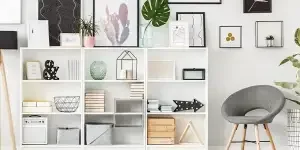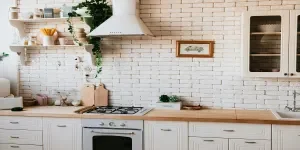Drawer organizers have become indispensable in streamlining storage and enhancing efficiency in both residential and commercial settings. As diverse as the items they contain, these organizers vary from simple dividers to complex modular systems, each designed to keep contents accessible and in order. Their evolution reflects a response to the increasing demand for organization solutions that not only save space but also contribute to a more productive environment. By integrating thoughtful design with practical functionality, drawer organizers address a broad spectrum of organizational challenges, making them a critical component in optimizing operational workflows.
Table of Contents
1. Types and functions of drawer organizers
2. Insights into the drawer organizer market
3. Criteria for selecting the right drawer organizers
4. Highlighted models and their key features
1. Types and functions of drawer organizers
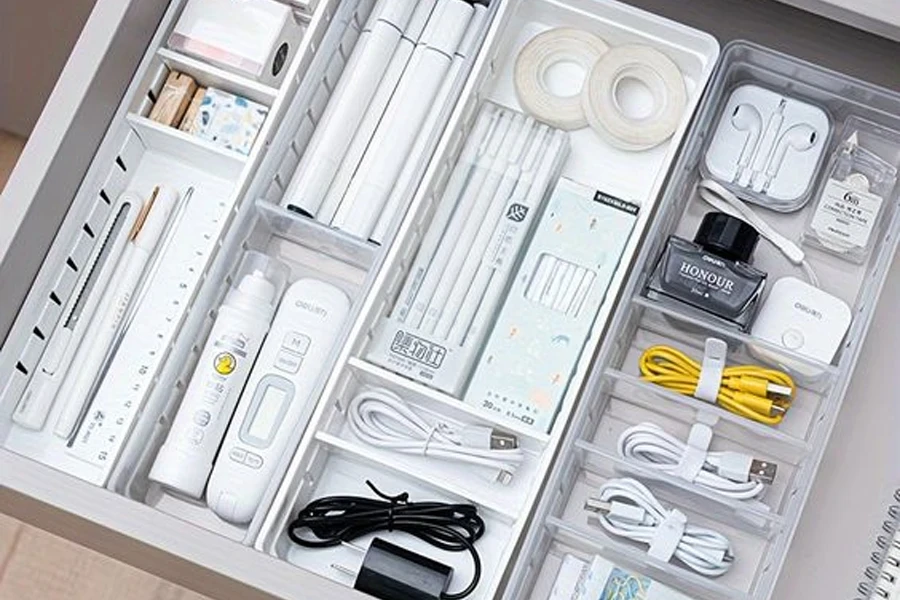
Drawer organizers, integral in maintaining order and efficiency, come in various styles, each tailored to specific needs and spaces. Understanding these different styles and their functional benefits allows for better decision-making when enhancing storage capabilities within any setup.
Different styles of drawer organizers
The market offers a wide range of drawer organizers, each designed to tackle unique organizational challenges. From minimalistic designs that blend seamlessly into contemporary spaces to adjustable and expandable models, the options cater to diverse preferences and requirements. For instance, the most common types include flatware organizers, which are essential for sorting everyday utensils, and deep drawer options designed for larger items like pots and cooking tools. Innovations have also introduced modular systems that can be customized to fit any drawer size and content type, as seen in current trends emphasizing versatility and customization to maximize drawer space efficiently.
Furthermore, materials play a significant role in the selection of drawer organizers. Plastic and metal organizers offer durability and ease of cleaning, while bamboo and wood provide an aesthetic appeal that complements traditional and modern kitchen designs alike. Each material offers distinct advantages in terms of maintenance and longevity, impacting the organizer’s functionality and suitability for different environments.
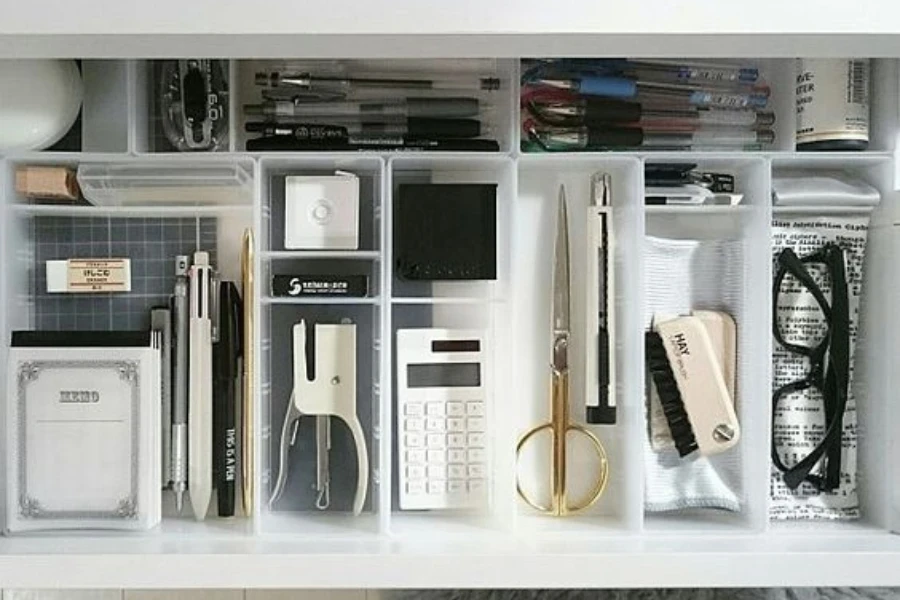
Functional benefits and common applications
The primary function of drawer organizers extends beyond mere organization; they are pivotal in enhancing productivity by reducing clutter and improving access to frequently used items. In commercial settings, where time and efficiency are paramount, having well-organized drawers can significantly speed up operations and reduce the time spent searching for necessary tools or supplies.
In kitchens, for example, drawer organizers improve workflow by systematically arranging cooking utensils, cutlery, and gadgets, thus streamlining cooking processes and meal preparation. The latest trends in kitchen design also highlight the integration of customizable organizers and inserts, which adapt to specific needs and can include features like built-in spice racks or knife blocks. These tailored solutions not only maximize drawer space but also contribute to a safer and more practical working environment.
Similarly, in office settings, drawer organizers are crucial for maintaining an orderly workspace. They ensure easy access to office supplies, reduce desk clutter, and can even be customized to hold electronic devices and cables, thereby enhancing overall productivity and focus.
2. Insights into the drawer organizer market
Current market dynamics
The drawer organizer market has experienced substantial growth, driven by increased consumer focus on home organization and the ongoing trends towards maximizing living spaces. This growth is further bolstered by the rising demand in the commercial sector, where efficiency and space management are critical. Innovations in design and material have played a key role in market expansion, with manufacturers introducing products that are not only functional but also enhance the aesthetic appeal of the spaces they inhabit.
Market analysts observe that the integration of technology into traditional storage solutions has created a new segment of smart organizers. These products offer advanced features such as modular designs that can be customized to user specifications and incorporate materials that complement modern decor trends. The emphasis on eco-friendly materials like bamboo and recycled plastics also reflects a shift towards sustainability in product manufacturing, aligning with broader consumer values around environmental responsibility.
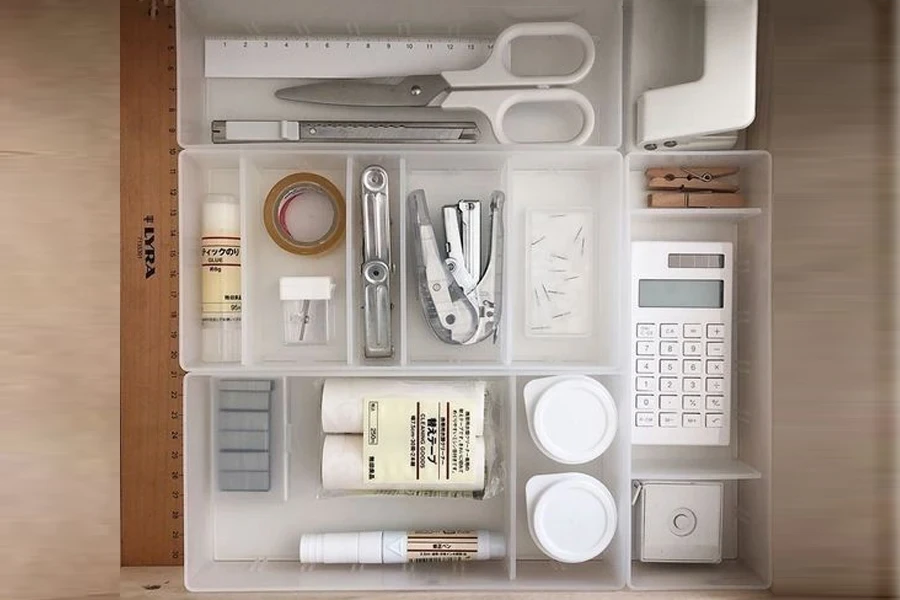
Analysis of demand trends and consumer preferences
Consumer preferences have evolved significantly, with a noticeable shift towards personalized storage solutions that offer both functionality and style. There is a strong preference for drawer organizers that can be adapted to various spaces and needs, indicating a move away from one-size-fits-all products. The demand for customizable and expandable drawer organizers highlights this trend, with individuals seeking products that not only fit their specific space requirements but also their aesthetic preferences.
Moreover, the data suggests that as kitchens and home offices have become more central to daily life, particularly following shifts in work patterns due to global health considerations, there has been an increased investment in products that enhance these environments. Consumers are focusing on organizers that not only help in maintaining clutter-free spaces but also contribute to a more enjoyable and efficient living and working environment.
In the commercial realm, the requirements for drawer organizers often center around durability and the ability to withstand heavy use. Businesses are investing in high-quality organizers that promise longevity and can adapt to various professional environments, from hospitality to office settings. This practical approach does not overlook the importance of aesthetics, as professional spaces also seek to create inviting atmospheres for both employees and clients.
Overall, the drawer organizer market is characterized by a dynamic interplay of innovation, consumer demand, and evolving lifestyles. As the market continues to grow, these trends are expected to influence product development and marketing strategies significantly, ensuring that drawer organizers remain essential components in both residential and commercial organizational systems.
3. Criteria for selecting the right drawer organizers

Assessing material quality and durability
Selecting the right materials for drawer organizers is crucial not only for durability but also for the maintenance and overall functionality of the product. Materials commonly used in drawer organizers include plastic, wood, metal, and fabric, each offering distinct advantages and challenges. Plastic organizers are celebrated for their affordability, lightweight nature, and ease of cleaning. They are particularly suited for environments where moisture and spills are common, such as kitchens and bathrooms. However, not all plastics are created equal; high-quality, BPA-free plastics are recommended for their longevity and safety.
Wooden organizers, on the other hand, offer a robustness and aesthetic appeal that make them popular in residential and office settings. The choice of wood—from bamboo to hardwood—impacts the price and durability. Bamboo is particularly favored for its sustainability and strength, making it a smart choice for those looking for eco-friendly options without compromising on quality. Metal organizers, typically made from stainless steel or mesh, are durable and offer a sleek look, suitable for professional and personal spaces alike.
Considerations of design and aesthetics
The design and aesthetics of a drawer organizer should complement the interior design of the space without sacrificing functionality. Modern designs often feature minimalist lines and transparent materials to fit seamlessly into contemporary decor. For more traditional settings, wooden organizers with a natural finish can enhance the warmth and richness of the environment.
Aesthetics extends beyond just appearance; it also involves the functional design of the organizer. For example, organizers with adjustable compartments allow for customization based on the items being stored, which can vary greatly in different settings. The visual accessibility provided by clear organizers or those with labels can also enhance efficiency by reducing the time spent searching for items.
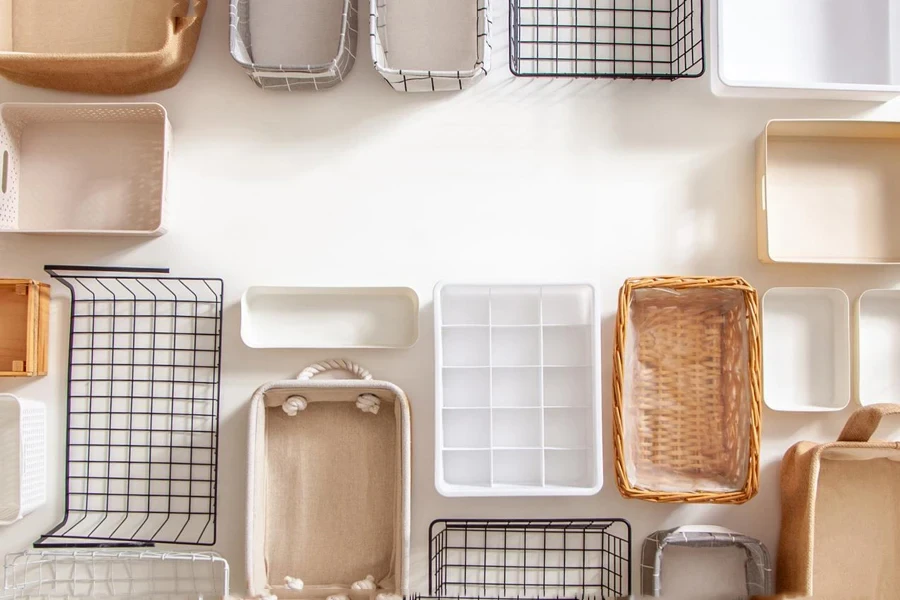
Importance of size and compatibility
Size and compatibility are critical factors in selecting the right drawer organizer. An organizer should fit snugly within the drawer without wasting space or requiring forceful adjustments. It is advisable to measure the internal dimensions of the drawer prior to purchasing an organizer to ensure a proper fit. Compatibility with the items to be stored is equally important; organizers should provide adequate space and compartmentalization to securely house the items without damage or clutter.
Additionally, the scalability of organizers can be a consideration for businesses or individuals planning for future expansion. Modular or stackable organizers that can be reconfigured or added to can offer flexibility as storage needs grow and change.
By carefully evaluating these criteria—material quality, design aesthetics, and size compatibility—individuals and businesses can select drawer organizers that not only meet their specific needs but also enhance the functionality and appearance of their storage spaces.
4. Highlighted models and their key features
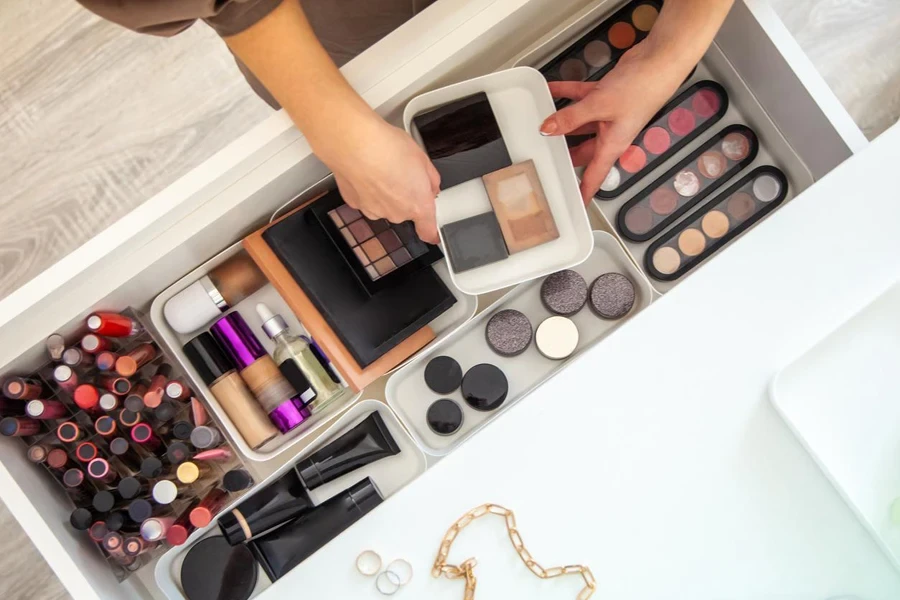
Overview of leading models for 2024
In 2024, the drawer organizer market showcases a variety of models designed to cater to diverse storage needs, from kitchen utensils to office supplies. Among the standout products, the Pipishell Bamboo Expandable Drawer Organizer emerges as a top contender due to its versatility and aesthetic appeal. It is particularly praised for its ability to adapt to different drawer sizes, making it an ideal choice for consumers seeking customizable storage solutions.
Another significant model is the Knife Dock, which specializes in storing sharp kitchen tools safely. Its design prioritizes safety and accessibility, featuring specialized compartments that protect both the blades and the user. This model is noted for its compact form factor, which does not compromise on capacity, allowing for efficient organization of various knife sizes.
Comparative analysis of top drawer organizers
When comparing the top drawer organizers, several key aspects come into focus. The Pipishell and the Umlife models both offer deep compartments, but the Pipishell is preferred for its waterproof features and eco-friendly materials, aligning with the growing consumer demand for sustainable products. In contrast, the Umlife is recognized for its substantial storage capacity and sturdiness, which is particularly valued in high-use areas like commercial kitchens.
The Knife Dock stands out in the niche category of cutlery organizers. Unlike general-purpose organizers, it provides targeted functionality with safety features like cork dividers that help maintain the sharpness and integrity of blades. This focus on specific storage needs distinguishes it from other models that aim for broader utility.

Innovations and technological advancements in design
Innovation in drawer organizer design is evident in the incorporation of materials and mechanisms that enhance usability and durability. For example, the use of bamboo in models like the Pipishell not only addresses environmental concerns but also offers durability and resistance to moisture—key considerations in kitchen settings.
Technological advancements are also shaping the future of drawer organizers. Features such as modular designs that can be expanded or reconfigured based on user needs are becoming more prevalent. This adaptability allows for a more personalized organization system that can evolve with changing preferences or needs.
Moreover, the integration of smart technology into drawer organizers is beginning to gain traction. Innovations such as RFID tags for tracking items and automated systems that suggest optimal organization strategies based on frequency of use are on the horizon, promising to make the humble drawer organizer an integral part of the smart home and office environments.
These developments highlight a market that is keenly attuned to the needs of modern consumers, offering solutions that are not only practical but also innovative and sustainable. The focus on customization, safety, and sustainability positions these leading models as essential tools for efficient and effective organization in both residential and commercial spaces.
Conclusion
The exploration of drawer organizers in 2024 reveals a market keen on innovation, quality, and customization. Materials ranging from eco-friendly bamboo to durable plastics, alongside designs that cater to both aesthetic allure and practical functionality, underscore the diverse needs and preferences of today’s consumers. As professionals and businesses aim to enhance operational efficiency and space utilization, the choice of a drawer organizer should align with specific environmental demands and personal style considerations. This ensures not only an organized space but also an investment in products that support sustainability and adaptability in evolving workplace and home environments.

